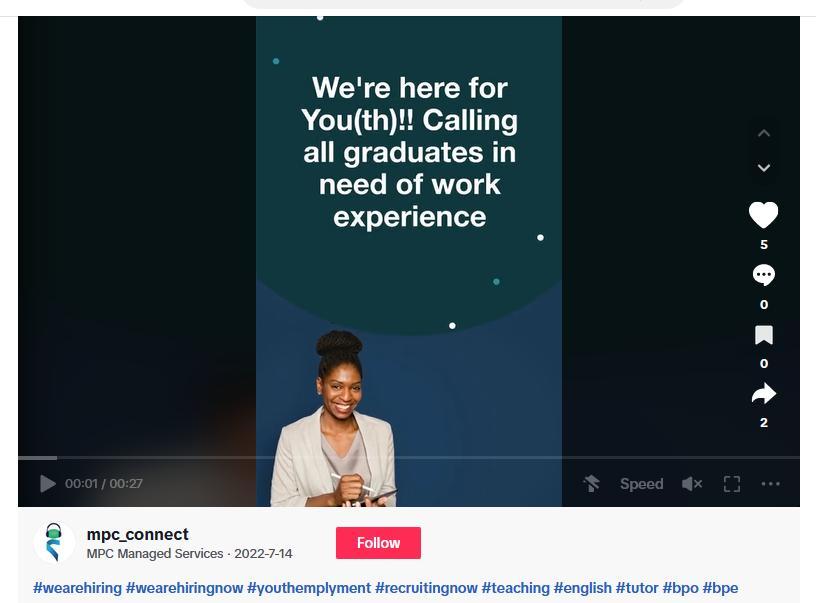Recruiter Enablement (Part 2)
In this follow up to a previous article I wrote here introducing the concept of recruiter enablement and explaining its vital importance, here are 62 easy-to-implement tactics you can put in place today. Well, OK, maybe not all today but over the space of a small few weeks.
The following (62) tactics are based on thousands of hours of research undertaken during 2023 and 2024 including over 160 interviews recorded for the Recruiter Enablement YouTube channel
Asset Libraries: Centralized resources ensure consistency in messaging and branding, easing the burden on recruiters who no longer need to craft materials from scratch. This not only streamlines processes but also upholds a unified employer brand image across all communication channels.
Job Advert Copy: Pre-approved templates for job descriptions guarantee that critical information is conveyed in an engaging manner. Recruiters save time and ensure messaging consistency, thereby attracting suitable candidates more effectively.
Email Copy: Templates tailored for various candidate communication stages streamline outreach and maintain professionalism. Recruiters can personalize these templates while ensuring effective delivery of essential information, boosting response rates and engagement.
Email/InMail Subject Headings: Compelling subject lines increase the likelihood of candidate engagement with emails or InMail messages. By enhancing outreach success rates, recruiters improve initial candidate interactions.
Social Media Outreach Copy: Customized messaging for different social platforms aids recruiters in effectively reaching passive candidates and showcasing the employer brand. Through engaging content, recruiters expand the candidate pool and attract top talent.
Team-Specific Candidate Pitch Decks: Personalized presentations highlight team culture and opportunities, aiding recruiters in effectively conveying unique selling points to potential candidates. This ensures alignment with the team’s ethos, attracting candidates who share similar goals.
Social Media Posts: Consistent and engaging posts across platforms bolster brand awareness and attract passive candidates. Recruiters utilize these posts to spotlight company culture and job opportunities, enhancing candidate interest and engagement.
Employer Brand Assets: Approved visual assets maintain brand consistency and bolster the company’s reputation as an employer of choice. Recruiters benefit from visually appealing materials accompanying job postings and social media content, reinforcing the employer brand and attracting candidates.
Colleague Stories: Personal anecdotes from team members humanize the organization and offer genuine insights into its culture. By sharing these stories, recruiters forge connections with candidates and showcase positive employee experiences, fostering trust and interest.
Crib Sheets: Quick-reference guides streamline common tasks, enabling recruiters to work more efficiently. Easy access to essential information reduces errors and ensures consistency in approach.
Elevator Pitches: Succinct summaries of the company and its opportunities enable recruiters to engage effectively with candidates and stakeholders. Capturing key selling points in brief encounters piques interest and encourages further engagement.
Objection Handling: Prepared responses to common objections empower recruiters to address candidate concerns confidently. By providing persuasive arguments or reassurances, recruiters maintain candidate interest and progress the recruitment process.
Candidate Rejection Messaging: Respectful templates for rejecting candidates ensure a positive candidate experience. Even in rejection, recruiters can leave candidates with a favorable impression, potentially encouraging future applications or referrals.
Hiring Manager Messages: Templates for effective communication with hiring managers streamline collaboration and clarify expectations. By facilitating efficient updates and feedback, recruiters foster productive partnerships with hiring managers.
Req Process Comms: Clear communication templates for managing requisition processes ensure alignment and transparency. Timely updates and clarification of requirements facilitate smooth recruitment workflows.
Career Stories: Narratives showcasing career progression inspire candidates and highlight growth opportunities within the organization. By demonstrating commitment to employee development, recruiters attract ambitious candidates seeking long-term career prospects.
Job Role Explanation Tool: Resources aid recruiters in effectively explaining job roles to candidates. Articulating responsibilities and opportunities helps candidates make informed decisions about their fit for the role.
Boolean Strings: Search strings optimize candidate sourcing efforts, saving time and improving accuracy. Refining search queries ensures identification of candidates with specific skills or experience.
Job Visualization Tools: Visual aids enhance candidate understanding of roles and responsibilities. Engaging job descriptions or presentations improve comprehension and interest.
Sample Offer Calculators: Tools estimate compensation packages, ensuring competitive offers. Factoring in salary and benefits aligns offers with candidate expectations and market standards.
Insights Sharing: Collaborative notes foster knowledge sharing and continuous learning within teams. Insights, best practices, and success stories enhance team effectiveness.
Team Skills Search: A searchable database identifies colleagues with specific skills or knowledge. Collaboration and skill-sharing maximize team efficiency.
Candidate Personas: Profiles guide recruiters in targeting and engaging suitable candidates. Tailoring messaging and outreach increases the likelihood of attracting top talent.
Talent Intelligence: Data on industry trends inform recruitment strategies. Leveraging talent intelligence enables recruiters to remain competitive in the talent market.
Battle Cards: Resources manage competitor insights, aiding in positioning the company effectively. Tailoring messaging and addressing candidate concerns increase the chances of attracting top talent.
Objection Handling Linked to Battle Card Data: Strategies backed by competitive intelligence enhance objection handling. Leveraging data provides compelling responses and strengthens the company’s position in the talent market.
Open Source Intelligence: Publicly available information enriches recruitment strategies. Identifying talent trends and tailoring outreach maximizes recruitment impact.
‘How-To’ Guides: Resources simplify the navigation of tools and processes, boosting recruiter efficiency. Step-by-step instructions and best practices reduce errors and improve productivity.
ATS: Guides facilitate efficient candidate management through applicant tracking systems. Optimizing ATS usage ensures compliance and streamlines recruitment processes.
CRM: Guides aid recruiters in effectively managing candidate relationships. Personalized communication enhances candidate experience and relationship-building efforts.
Career Site: Guides optimize career site performance in attracting candidates. Enhancing user experience and content ensures effective employer brand representation.
Assessment Tools: Guides facilitate objective candidate evaluation. Standardizing assessments improves reliability in candidate selection.
Interview Format: Guides ensure consistency and fairness in candidate evaluation. Structured interviews enhance reliability and validity of outcomes.
Recruitment Process: Guides provide transparency to candidates and stakeholders. Navigating recruitment stages ensures a positive experience for all parties involved.
Company Culture: Guides promote understanding and alignment with company culture. Articulating culture and showcasing initiatives foster candidate engagement.
Diversity, Equity, and Inclusion (DEI) Approach: Guides support inclusive recruitment practices. Mitigating bias and promoting diversity ensure equitable opportunities for all candidates.
Team Structure: Guides aid in understanding team dynamics and alignment with recruitment goals. Enhancing teamwork and synergy improves recruitment effectiveness.
Metrics: Guides enable performance tracking and improvement identification. Data-driven decisions optimize recruitment strategies.
Strategy: Guides align recruitment efforts with organizational goals. Understanding strategic objectives ensures recruitment contributes to organizational success.
Sourcing Techniques: Guides enhance candidate sourcing strategies. Accessing passive candidates and expanding the candidate pool maximize recruitment reach.
Advertising and Job Boards: Guides optimize job advertising effectiveness. Selecting appropriate platforms and measuring ROI enhance recruitment outcomes.
Internal Mobility and Career Progression: Guides support employee development and retention. Facilitating internal mobility fosters employee engagement and loyalty.
Workforce Planning: Guides align recruitment efforts with organizational needs. Forecasting talent needs ensures organizational agility.
Onboarding: Guides ensure a smooth transition for new hires. Coordinating onboarding activities maximizes new hire productivity.
Contingent Workforce Management: Guides streamline engagement with temporary employees. Effective management ensures contingent workers contribute to organizational success.
Employee Referral Programs: Guides leverage employee networks for talent acquisition. Promoting referral programs maximizes recruitment effectiveness.
Pre-Employment Screening: Guides ensure candidate suitability and compliance. Conducting thorough screenings mitigates risk and ensures hiring standards.
Offer Sourcing Tools: Resources aid in candidate sourcing and engagement. Identifying and reaching out to potential candidates effectively expands the candidate pool.
Hiring Manager Toolkit: Resources empower hiring managers in recruitment processes. Streamlining involvement ensures alignment and collaboration.
DEI Tools: Tools mitigate bias and promote diversity in recruitment. Creating inclusive practices ensures equitable candidate selection.
ChatGPT Prompts List: Prompts enhance recruiter productivity and communication. Personalized messaging and streamlined communication save time.
Candidate Tag Bank: Tags organize candidate profiles for efficient management. Segmentation and personalized outreach improve engagement.
Compensation and Benefits Data: Information ensures competitiveness in offer negotiations. Benchmarking salaries and benefits attracts top talent.
Internal Acronyms: A reference list aids in internal communication clarity. Decoding jargon enhances collaboration.
Job Description Bank: Templates ensure consistency in job postings. Customization and publication across channels attract qualified candidates.
Preferred Supplier List (PSL) Details: Information streamlines vendor management. Engaging preferred suppliers ensures quality recruitment partnerships.
Interview Questions and Pre-Screen Templates: Structured guides ensure fairness in candidate assessment. Standardizing interviews improves reliability.
Labor Laws Links: References ensure compliance with legal requirements. Staying informed minimizes legal risks.
Data FAQs for Candidates: Answers reassure candidates and build trust. Transparent communication promotes a positive candidate experience.
Role Responsibilities: Clear delineation fosters accountability and alignment. Effective collaboration ensures successful recruitment outcomes.
Hiring Manager Collaboration Process: Guidelines enhance communication and coordination. Setting expectations and providing support optimize outcomes.
Accessibility: Easy access improves recruiter productivity. User-friendly interfaces minimize barriers.
In summary, comprehensive resources empower recruiters to optimize workflows and improve candidate engagement.
By leveraging these tools and guides, recruiters can enhance efficiency, effectiveness, and collaboration, ultimately driving positive outcomes for candidates and organizations alike.


























